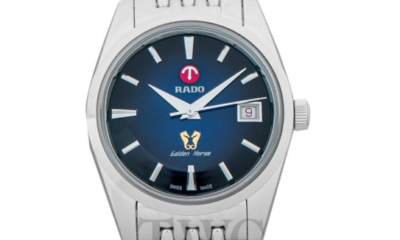Centenarians—individuals who live to 100 years or more—have sparked global curiosity for their longevity secrets. Many of these remarkable people reside in “Blue Zones,” regions known for their high concentration of centenarians, such as Loma Linda, California; Nicoya, Costa Rica; Sardinia, Italy; Ikaria, Greece; and Okinawa, Japan.
Research into Blue Zone diets reveals key foods that contribute to healthy aging and overall well-being. Here are 10 staples of their diet:
1. Beans
Beans and legumes are dietary cornerstones in Blue Zones. Packed with protein, fiber, vitamins, and minerals, they’re both nutritious and versatile.
With a low glycemic index, beans provide steady energy and help prevent spikes in blood sugar levels, an essential factor in managing and preventing diabetes, particularly in older adults. Additionally, beans’ soluble fiber supports gut health by nurturing beneficial bacteria, enhancing nutrient absorption, and reducing cholesterol levels to promote heart health.
Beans also boast antioxidant properties, helping combat oxidative stress, which can lead to chronic inflammation and age-related diseases.
2. Leafy Greens
Leafy greens like spinach, kale, and Swiss chard are a staple in Blue Zone diets. These nutrient-rich vegetables are associated with reduced inflammation, improved immunity, and better heart health.
Leafy greens also play a role in maintaining cognitive health. Compounds like lutein, folate, and beta-carotene—found in abundance in these greens—help slow age-related cognitive decline, supporting brain health well into later years.
3. Nuts and Seeds
Nuts such as walnuts, almonds, and pistachios are a common feature in Blue Zone diets. These nutrient-dense foods are rich in healthy fats, protein, and fiber, as well as antioxidants and anti-inflammatory compounds.
Regular consumption of nuts has been linked to lower cholesterol, improved blood pressure, and reduced risks of diabetes. Seeds like chia and flaxseed share many of these benefits, making them excellent additions to a longevity-focused diet.
4. Whole Grains
Whole grains like quinoa, whole wheat, and brown rice are vital for healthy aging. These complex carbohydrates are high in fiber and other essential nutrients, supporting digestion, blood sugar control, and heart health.
Whole grains provide sustained energy and can aid in weight management by promoting a feeling of fullness. In Blue Zones, baking bread from scratch—often with sourdough starter—is a cherished tradition. Sourdough bread, known for its digestive and metabolic health benefits, exemplifies their wholesome approach to eating.
5. Olive Oil
Olive oil, a staple in Mediterranean Blue Zones, is renowned for its health-promoting properties. Rich in monounsaturated fatty acids, it supports heart health by lowering cholesterol levels and combating free radicals linked to cardiovascular disease.
In addition to its anti-inflammatory and antioxidant effects, olive oil benefits the liver, immune system, kidneys, digestion, and brain health. Its versatility makes it a key ingredient in Blue Zone kitchens, used for cooking and dressing dishes.
6. Turmeric
Turmeric is a common ingredient in some Blue Zone diets, often added to stews, soups, and teas. Known for its potent anti-inflammatory properties, turmeric promotes healthy digestion, boosts immune function, and supports brain health.
Research shows that turmeric may improve working memory and processing speed, reducing the risk of age-related neurological diseases and supporting independence in later years.
7. Sweet Potatoes
Sweet potatoes, particularly the purple variety, are a dietary staple for Okinawan centenarians. These nutrient-dense tubers are packed with fiber and bioactive compounds that combat inflammation and support longevity.
Sweet potatoes provide steady energy, thanks to their complex carbohydrates, and are versatile in preparation—whether baked, boiled, or mashed.
8. Seafood
Proximity to the ocean makes seafood a natural part of the Blue Zone diet. Fish and shellfish offer a nutrient-rich source of protein, omega-3 fatty acids, and essential minerals.
Omega-3 fatty acids are particularly beneficial for brain health, reducing inflammation, and promoting cardiovascular health. Current dietary guidelines recommend eating seafood at least twice weekly, though most Americans fall short of this target.
9. Fruits
Fruits are a vital component of Blue Zone diets, providing essential vitamins, fiber, and antioxidants. Regular fruit consumption is associated with improved blood sugar control, weight management, and heart health.
The specific health benefits of fruits vary, but their overall role in promoting vitality and reducing the risk of chronic diseases is well-documented.
10. Teas
Herbal teas are a daily ritual for many centenarians. These beverages, often made from local plants, offer comfort and a host of health benefits.
Rich in bioactive compounds, teas possess antioxidant, anti-inflammatory, and antimicrobial properties. Regular tea consumption has been linked to a reduced risk of chronic conditions like cardiovascular disease, diabetes, arthritis, and certain cancers.

 Entertainment4 weeks ago
Entertainment4 weeks ago
 Entertainment4 weeks ago
Entertainment4 weeks ago
 Entertainment4 weeks ago
Entertainment4 weeks ago
 Entertainment4 weeks ago
Entertainment4 weeks ago
 Entertainment3 weeks ago
Entertainment3 weeks ago
 Entertainment4 weeks ago
Entertainment4 weeks ago
 Entertainment3 weeks ago
Entertainment3 weeks ago
 Entertainment4 weeks ago
Entertainment4 weeks ago












